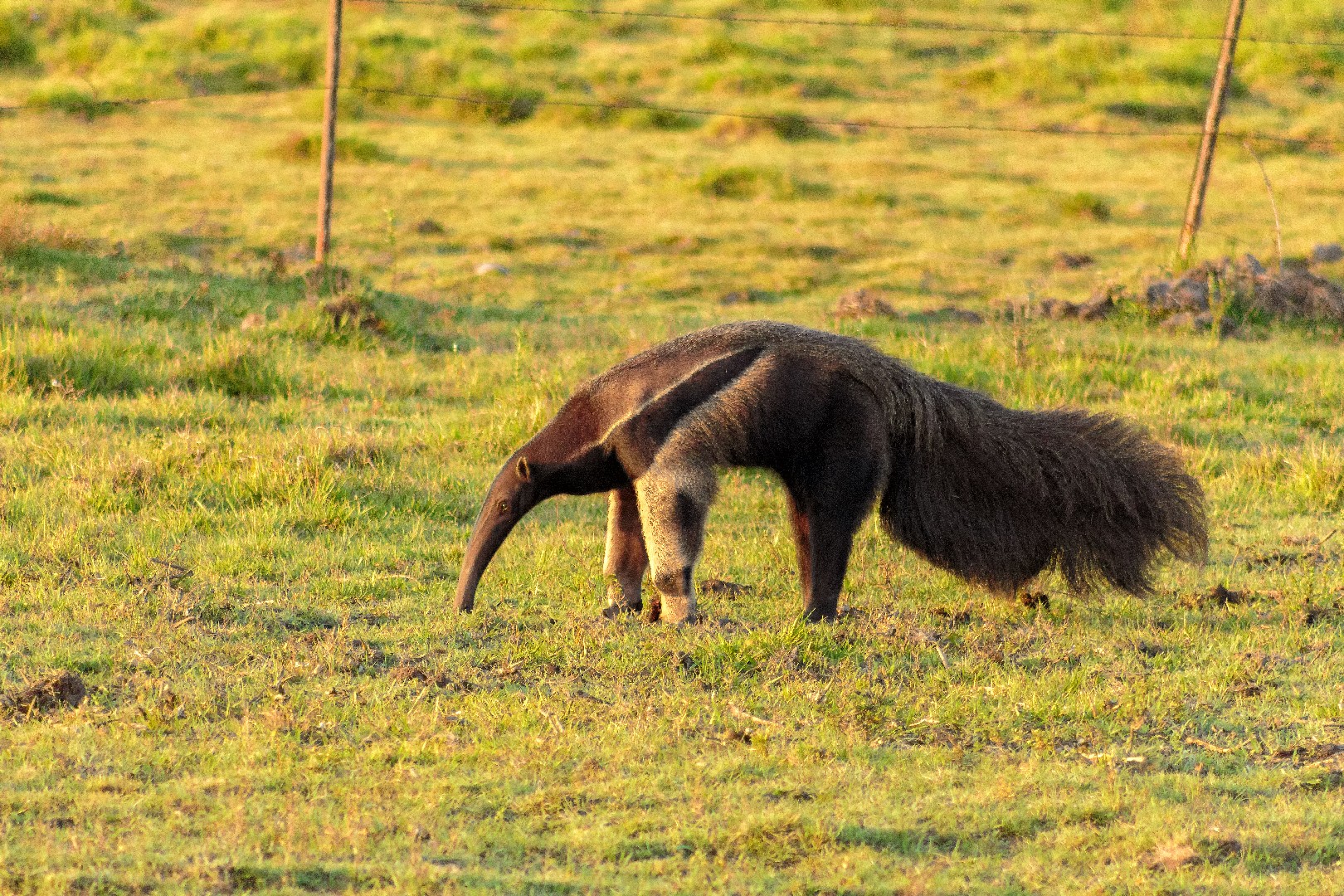Giant anteater
A species of Giant anteaters, Also known as Giant vermilingua Scientific name : Myrmecophaga tridactyla Genus : Giant anteaters
Giant anteater, A species of Giant anteaters
Also known as:
Giant vermilingua
Scientific name: Myrmecophaga tridactyla
Genus: Giant anteaters
Content
Description General Info
 Photo By Fernando Flores , used under CC-BY-SA-2.0 /Cropped and compressed from original
Photo By Fernando Flores , used under CC-BY-SA-2.0 /Cropped and compressed from original Description
The giant anteater can be identified by its large size, elongated muzzle, and long bushy tail. It has a total body length of 182 to 217 cm (5.97 to 7.12 ft). Males weigh 33 to 41 kg (73 to 90 lb) and females weigh 27 to 39 kg (60 to 86 lb), making the giant anteater the largest extant species in its suborder. The head of the giant anteater, at 30 cm (12 in) long, is particularly elongated, even when compared to other anteaters. Its tubular snout, which ends in its tiny mouth opening and nostrils, takes up most of its head. Its eyes and ears are relatively small. It has poor eyesight, but its sense of smell is 40 times more sensitive than that of humans. Giant anteaters can live around 16 years in captivity. Even for an anteater, the neck is especially thick compared to the back of the head, and a small hump can be found at the back of the neck. The coat is mostly grey and salted with white. The forelimbs are white, with black bands around the wrists, while the hindlimbs are dark. Thick black bands with white outlines stretch from throat to shoulder, ending in triangular points. The body ends in a brown tail. The coat hairs are long, especially on the tail, which makes the tail look larger than it actually is. A stiff mane stretches along the back. The bold pattern was thought to be disruptive camouflage, but a 2009 study suggests it is warning coloration. While adult males are slightly larger and more muscular than females, with wider heads and necks, visual sex determination can be difficult. The penis and testes are located internally between the rectum and urinary bladder in males, and females have a single pair of mammary glands near the armpits. The giant anteater has broad ribs. Despite its specific name, tridactyla, meaning three fingers, it has five toes on each foot. Four toes on the front feet have claws, which are particularly elongated on the second and third digits. It walks on its front knuckles, similar to the African apes, specifically gorillas and chimpanzees. Doing this allows the giant anteater to keep its claws out of the way while walking. The middle digits, which support most of its weight, are extended at the metacarpophalangeal joints and bent at the interphalangeal joints. Unlike the front feet, the hind feet have short claws on all five toes and walk plantigrade. As a "hook-and-pull" digger, the giant anteater's enlarged supraspinous fossa gives the teres major more leverage—increasing the front limbs' pulling power—and the triceps muscle helps power the flexion of the thickened third digit of the front feet. The giant anteater has a low body temperature for a mammal, about 33 °C (91 °F), a few degrees lower than a typical mammalian temperature of 36 to 38 °C (97 to 100 °F). Xenarthrans in general tend to have lower metabolic rates than most other mammals, a trend thought to correlate with their dietary specializations and low mobility. 
General Info
Lifespan
15-20 years
Diet
Giant anteater or the Giant Anteater has a highly specialized diet primarily consumed with ants and termites. They use their keen sense of smell to locate colonies and their long, sticky tongues to extract their prey, consuming about 30,000 insects daily.
Appearance
Giant anteater is a large mammal, characterized by a long, slender body and a similarly elongated snout. Its skin is covered in coarse, sparse fur that is mainly gray with a subtle brownish tint. This species has a distinct bushy tail and long, curved claws used for digging. There are no significant differences in appearance due to age, gender, or subspecies.
Behavior
Giant anteater is a solitary nocturnal forager, using its sharp claws and keen sense of smell to locate and consume ants and termites. It communicates through chemical signals, and males defend their territories vigorously against rivals. This animal also employs a unique defensive strategy by standing on hind legs and brandishing claws when threatened.
Population
Decreasing
Scientific Classification
Phylum
Chordates Class
Mammals Order
Anteaters and sloths Family
Anteaters Genus
Giant anteaters Species
Giant anteater